#aws lambda code
Text
AWS Lambda Compute Service Tutorial for Amazon Cloud Developers
Full Video Link - https://youtube.com/shorts/QmQOWR_aiNI
Hi, a new #video #tutorial on #aws #lambda #awslambda is published on #codeonedigest #youtube channel.
@java @awscloud @AWSCloudIndia @YouTube #youtube @codeonedigest #codeonedigest #aws #amaz
AWS Lambda is a serverless compute service that runs your code in response to events and automatically manages the underlying compute resources for you. These events may include changes in state such as a user placing an item in a shopping cart on an ecommerce website.
AWS Lambda automatically runs code in response to multiple events, such as HTTP requests via Amazon API Gateway, modifications…
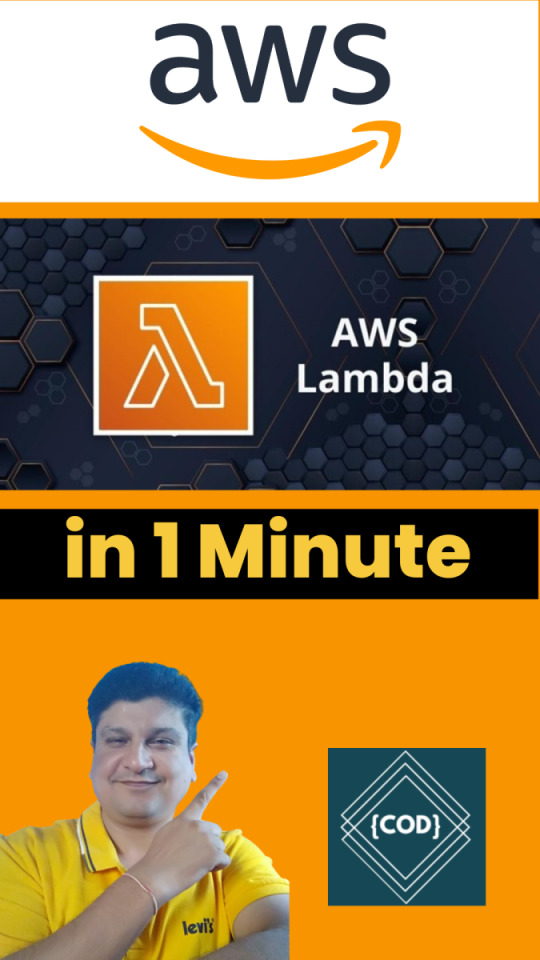
View On WordPress
#amazon lambda java example#aws#aws cloud#aws lambda#aws lambda api gateway#aws lambda api gateway trigger#aws lambda basic#aws lambda code#aws lambda configuration#aws lambda developer#aws lambda event trigger#aws lambda eventbridge#aws lambda example#aws lambda function#aws lambda function example#aws lambda function s3 trigger#aws lambda java#aws lambda server#aws lambda service#aws lambda tutorial#aws training#aws tutorial#lambda service
0 notes
Text
The Rise of AI Software Engineers: SWE-Agent, Devin AI and the Future of Coding
New Post has been published on https://thedigitalinsider.com/the-rise-of-ai-software-engineers-swe-agent-devin-ai-and-the-future-of-coding/
The Rise of AI Software Engineers: SWE-Agent, Devin AI and the Future of Coding
The field of artificial intelligence (AI) continues to push the boundaries of what was once thought impossible. From self-driving cars to language models that can engage in human-like conversations, AI is rapidly transforming various industries, and software development is no exception. The emergence of AI-powered software engineers, such as SWE-Agent developed by Princeton University’s NLP group, Devin AI, represents a groundbreaking shift in how software is designed, developed, and maintained.
SWE-Agent, a cutting-edge AI system, promises to revolutionize the software engineering process by autonomously identifying and resolving GitHub issues with unprecedented speed and accuracy. This remarkable tool leverages state-of-the-art language models like GPT-4, streamlining the development cycle and enhancing developer productivity.
The Advent of AI Software Engineers
Traditionally, software development has been a labor-intensive process, requiring teams of skilled programmers to write, review, and test code meticulously. However, the advent of AI-powered software engineers like SWE-Agent has the potential to disrupt this age-old paradigm. By harnessing the power of large language models and machine learning algorithms, these AI systems can not only generate code but also identify and fix bugs, streamlining the entire development lifecycle.
One of the key advantages of SWE-Agent is its ability to autonomously resolve GitHub issues with remarkable efficiency. On average, it can analyze and fix problems within 93 seconds, boasting an impressive 12.29% success rate on the comprehensive SWE-bench test set. This level of speed and accuracy is unprecedented in the software engineering realm, promising to significantly accelerate development timelines and reduce the overall cost of software projects.
At the core of SWE-Agent’s success lies the innovative Agent-Computer Interface (ACI), a design paradigm that optimizes interactions between AI programmers and code repositories. By simplifying commands and feedback formats, ACI facilitates seamless communication, empowering SWE-Agent to perform tasks ranging from syntax checks to test execution with remarkable efficiency. This user-friendly interface not only enhances performance but also accelerates adoption among developers, making AI-assisted software development more accessible and approachable.
SWE agent LLM
LLM Agents: Orchestrating Task Automation
LLM agents are sophisticated software entities designed to automate the execution of complex tasks. These agents are equipped with access to a comprehensive toolkit or set of resources, enabling them to intelligently determine the best tool or method to employ based on the specific input they receive.
The operation of an LLM agent can be visualized as a dynamic sequence of steps, meticulously orchestrated to fulfill the given task. Significantly, these agents possess the capability to use the output from one tool as input for another, creating a cascading effect of interlinked operations.
BabyAGI: Task Management Powerhouse One of the most notable LLM agents is BabyAGI, an advanced task management system powered by OpenAI’s cutting-edge artificial intelligence capabilities. In tandem with vector databases like Chroma or Weaviate, BabyAGI excels in managing, prioritizing, and executing tasks with remarkable efficiency. Leveraging OpenAI’s state-of-the-art natural language processing, BabyAGI can formulate new tasks aligned with specific objectives and boasts integrated database access, enabling it to store, recall, and utilize pertinent information.
At its core, BabyAGI represents a streamlined version of the Task-Driven Autonomous Agent, incorporating notable features from platforms like GPT-4, Pinecone vector search, and the LangChain framework to independently craft and execute tasks. Its operational flow comprises four key steps: extracting the foremost task from the pending task list, relaying the task to a dedicated execution agent for processing, refining and storing the derived result, and formulating new tasks while dynamically adjusting the priority of the task list based on the overarching objective and outcomes of previously executed tasks.
AgentGPT: Autonomous AI Agent Creation and Deployment AgentGPT is a robust platform tailored for the creation and deployment of autonomous AI agents. Once a particular objective is defined for these agents, they embark on a relentless loop of task generation and execution, striving tirelessly to meet the stipulated goal. At the heart of its operation lies a chain of interconnected language models (or agents) that collaboratively brainstorm the optimal tasks to meet an objective, execute them, critically assess their performance, and iteratively devise subsequent tasks. This recursive approach ensures that AgentGPT remains adaptive, learning and refining its strategies with each loop to inch closer to the objective.
https://arxiv.org/pdf/2308.00352.pdf
Code Assistants: Enhancing Developer Productivity
Code assistants are advanced tools designed to assist developers in the code-writing process, often implemented as Integrated Development Environment (IDE) plugins, extensions, or add-ons. These assistants are capable of suggesting code completions, identifying and rectifying bugs, providing optimization recommendations, and simplifying recurring coding tasks. By incorporating generative AI models, they analyze coding patterns and furnish insights that streamline the development workflow, accelerating code generation and elevating the quality of output.
GitHub Copilot: AI-Powered Programming Companion GitHub Copilot, developed through a collaboration between GitHub and OpenAI, harnesses the capabilities of the Codex generative model, aiding developers in writing code more efficiently. Described as an AI-powered programming companion, it presents auto-complete suggestions during code development. GitHub Copilot keenly discerns the context of the active file and its related documents, proposing suggestions directly within the text editor. It boasts proficiency across all languages represented in public repositories.
Copilot X, an enhanced version of Copilot, builds upon this foundation, offering an enriched experience with chat and terminal interfaces, enhanced support for pull requests, and leveraging OpenAI’s GPT-4 model. Both Copilot and Copilot X are compatible with Visual Studio, Visual Studio Code, Neovim, and the entire JetBrains software suite.
AWS CodeWhisperer: Real-Time Coding Recommendations Amazon CodeWhisperer is a machine learning-driven code generator that offers real-time coding recommendations. As developers script, it proactively presents suggestions influenced by the ongoing code. These propositions range from concise comments to elaborately structured functions. Currently, CodeWhisperer is attuned to a multitude of programming languages, including Java, Python, JavaScript, TypeScript, and many more. The tool seamlessly integrates with platforms such as Amazon SageMaker Studio, JupyterLab, Visual Studio Code, JetBrains, AWS Cloud9, and AWS Lambda.
Bard to Code: Conversational AI for Code Generation Bard, often categorized as conversational AI or a chatbot, demonstrates an adeptness in producing human-like textual responses to a diverse spectrum of prompts, owing to its extensive training on a myriad of textual data. Moreover, it possesses the dexterity to produce code across various programming languages, including but not limited to Python, Java, C++, and JavaScript.
SWE-Agent vs. Competitors: Democratizing Access to Advanced Programming Capabilities
In a landscape dominated by proprietary solutions like Devin AI and Devika, SWE-Agent shines as an open-source alternative, democratizing access to cutting-edge AI programming capabilities. Both SWE-Agent and Devin boast impressive performance on the SWE-bench benchmark, with SWE-Agent achieving a competitive 12.29% issue resolution rate. However, SWE-Agent’s open-source nature sets it apart, aligning with the collaborative ethos of the software development community.
By making its codebase available to developers worldwide, SWE-Agent invites contributions and fosters an ecosystem of innovation and knowledge-sharing. Developers can freely integrate SWE-Agent into their workflows, harnessing its power to streamline software development processes while simultaneously contributing to its evolution. This collaborative approach empowers developers of all backgrounds and skill levels to optimize their workflows, enhance code quality, and navigate the complexities of modern software development with confidence.
Beyond its technical prowess, SWE-Agent holds the potential to catalyze a paradigm shift in software engineering education and community collaboration. As an open-source tool, SWE-Agent can be integrated into educational curricula, providing students with hands-on experience in AI-assisted software development. This exposure can help shape the next generation of software engineers, equipping them with the skills and mindset necessary to thrive in an increasingly automated and AI-driven industry.
Moreover, SWE-Agent’s collaborative nature encourages developers to share their experiences, best practices, and insights, fostering a vibrant community of knowledge exchange. Through open-source contributions, bug reports, and feature requests, developers can actively participate in shaping the future of AI-powered software engineering. This collaborative approach not only accelerates the pace of innovation but also ensures that SWE-Agent remains relevant and adaptable to the ever-evolving needs of the software development ecosystem.
The Future of Software Development
While the emergence of AI-powered software engineers like SWE-Agent presents exciting opportunities, it also raises important questions and challenges that must be addressed. One critical consideration is the potential impact on the software development workforce. As AI systems become more capable of automating various aspects of the development process, there may be concerns about job displacement and the need for reskilling and upskilling initiatives.
However, it’s important to recognize that AI is not a replacement for human developers but rather a powerful tool to augment and enhance their capabilities. By offloading repetitive and time-consuming tasks to AI systems like SWE-Agent, human developers can focus on higher-level tasks that require critical thinking, creativity, and problem-solving skills. This shift in focus could lead to more fulfilling and rewarding roles for software engineers, allowing them to tackle more complex challenges and drive innovation.
Another challenge lies in the ongoing development and refinement of AI systems like SWE-Agent. As software complexity continues to increase and new programming paradigms emerge, these AI systems must be continuously trained and updated to stay relevant and effective. This requires a concerted effort from the research community, as well as close collaboration between academia and industry, to ensure that AI-powered software engineers remain at the forefront of technological advancements.
Moreover, as AI systems become more integrated into the software development process, concerns around security, privacy, and ethical considerations must be addressed. Robust measures must be put in place to ensure the integrity and trustworthiness of the generated code, as well as to mitigate potential biases or unintended consequences. Ongoing research and dialogue within the software engineering community will be crucial in navigating these challenges and establishing best practices for the responsible development and deployment of AI-powered software engineers.
Conclusion
The rise of AI-powered software engineers like SWE-Agent represents a pivotal moment in the evolution of software development. By leveraging the power of large language models and machine learning algorithms, these AI systems have the potential to revolutionize the way software is designed, developed, and maintained. With their remarkable speed, accuracy, and ability to streamline the development lifecycle, AI software engineers promise to enhance developer productivity and accelerate the pace of innovation.
However, the true impact of AI software engineers extends beyond mere technical capabilities. As open-source solutions like SWE-Agent gain traction, they have the power to democratize access to advanced programming capabilities, fostering a collaborative ecosystem of knowledge-sharing and empowering developers of all backgrounds and skill levels.
As we embrace the era of AI-assisted software development, it is crucial to recognize the challenges and opportunities that lie ahead. While job displacement concerns and the need for reskilling exist, AI systems like SWE-Agent also present an opportunity to redefine the role of software engineers, allowing them to focus on higher-level tasks that require critical thinking and creativity.
Ultimately, the successful integration of AI-powered software engineers into the software development ecosystem will require a collective effort from researchers, developers, and industry leaders.
#agent#AgentGPT#agents#ai#ai agent#AI AGENTS#AI models#AI systems#AI-powered#Algorithms#Amazon#approach#Art#artificial#Artificial Intelligence#AWS#AWS Lambda#BabyAGI#bard#benchmark#bug#bugs#Cars#challenge#chatbot#code#code development#code generation#codebase#codex
0 notes
Text
Something about Gordon Freeman that's extremely fascinating is how he was basically forced into the "Messiah" role by complete accident. Dude was on his way to work, caught in an extremely awful lab accident, and he was just fighting for his life so brutally that he ended up taking down an entire army, making the other less capable or equipped scientists assign him as the one that would go in and take down the Nihilanth - I mean, they basically didn't have many other options, or at least not many better options at their disposal. The whole time he basically doesn't have much of a say in any of it, which means he was practically railroaded into becoming the G-Man's employee by pure circumstance.
Doesn't get any better in Half Life 2 either - the surviving Black Mesa staff have turned this man they potentially sent to die into a legend amongst the resistance movement. The Vortigaunts chant his name as they draw murals on the canal walls. The Lambda - a symbol of both the Lambda Labs but most notably the symbol on the HEV suit - now symbolizes liberation. Therefore, of course, the man who bears this symbol is the liberator. By the ending chapters of Half Life 2, Freeman commands entire squads of rebels, appointed the leader regardless of how good a tactician he actually is - if they die, they died for him, not because of him. As long as he gets to the Citadel and breaches it's wall, all those deaths would be worth it - once again, others send him into a near-inhospitable environment to take down a near-invincible threat.
I think that despite us being in control of Freeman for most of the series, the real protagonists of the story are the Vance family. Eli, too, was right at ground zero when the Resonance Cascade occurred. He is the leader of the Resistance. It's very possible that he's the one who spread word of Freeman throughout City 17. The fall of Nova Prospekt AND the Citadel occurred as a result of Eli's capture. In the Combine's eyes, the Vances are a threat equal to, if not greater than Freeman himself. That, and the Vances have something Freeman doesn't - agency. They're beyond the G-Man's control. They're beyond the Combine's control. Their actions are completely their own, with no third party to control every single step they take. Over the course of the Episodes, it feels as though the dynamic shifts, with Alyx becoming a much more vital figure. The Combine are specifically after her now, because she carries the code capable of disrupting the portal through which the Combine could send reinforcements and finally consume Earth.
In both the Epistle 3 script and in Half Life Alyx it ends with her basically taking Freeman's position under the G-Man's employ. She quite literally takes the role of the Main Character away from Gordon. This, of course, is nothing to envy, because it's been repeatedly shown that any character assuming this role in the series ends up being reduced to nothing but a pawn for those who control them. It's an extremely fascinating spin on the linear nature of the games, canonically acknowledging you're doing nothing but marching along a path someone else made for you. Despite being the one free man, you're not offered much of a choice.
#hl#hl2#hl 2#half life#half life 2#gordon freeman#alyx vance#eli vance#the combine#g man#gman#the gman#rambling#had thoughts on this for a while but only recently managed to formulate them
510 notes
·
View notes
Photo

NeXt S1E1 https://www.disneyplus.com/en-gb/video/c9912951-a749-4913-b176-04f1abae655b
https://en.wikipedia.org/wiki/Next_(2020_TV_series)
"The code looks like an Apache variant; but it's the library stack that has me worried"
Source code seems to be Python Tensorflow, but searching for the exact code yielded no real world results, however snippets were found randomly across various example codebases on Github, which may suggest that the code itself was generated by AI.
Eg. "# Check that there is no :1 (e.g. it's single output)." is found here https://gist.github.com/sseveran/e27045c5fdb2d2f836ca63e13755665f but is incredibly out of context in the screenshot.
File names appear somewhat nonsensical too (save_ml_graph_info.config.py) and the files in the left sidebar seem to be a subtree of Tensorflow 1.8's codebase written in C++ (which you would be very unlikely to be looking at whilst developing actual TF code in python...) https://hhhhhojeihsu.github.io/tensorflow_1.8_woboq/tensorflow_1.8_aot_test/tensorflow/tensorflow/core/framework/
Code on the right appears to be taken straight from a Tensorflow tutorial: https://programtalk.com/vs4/python/PacktPublishing/Hands-On-Serverless-Deep-Learning-with-TensorFlow-and-AWS-Lambda/Chapter04/lesson4.3/Lambdapack/tensorflow/python/training/sync_replicas_optimizer.py/
Apparently in the show the AI is writing itself. I find it kinda cute that it's following an online tutorial to do so.
32 notes
·
View notes
Text
Tamagotchi Uni Uses AWS, Amazon Web Services

The Tamagotchi Uni is the first Tamagotchi to ever connect to Wi-Fi, which enables it to receive over the area updates, programing changes, and more. How exactly is this all being done by Bandai Japan? Well Bandai has built the Tamagotchi Uni on the Amazon Web Services platform (AWS).
The details of this are actually outlined on a recent article on the Amazon Web Services blog. The blog post provided a detailed view on how Tamagotchi Uni use AWS to achieve secure and reliable connectivity and quickly deliver new content updates without leaving customers waiting.It details that Bandai Co., Ltd., the company responsible for product development and sales, adopted AWS IoT to realize the concept of globally interconnected Tamagotchi, enabling users to interact with each other.
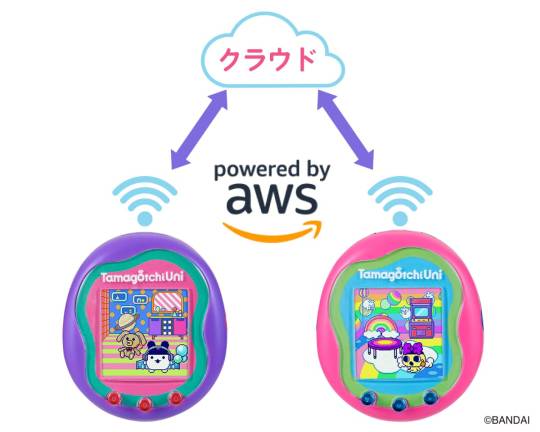
Bandai partnered with their cloud development partner, Phoenisys, Inc., to connect and manage million of Tamagotchi devices. One of the critical features was the over the air software updates which uses the jobs feature of AWS IoT Device Management to distribute the latest firmware across all Tamagotchi devices without causing any delays to customers.
To make Tamagotchi Uni IoT-enabled, Bandai establish the three key goals, which was implementing secure connections, scaling the load-balancing resources to accommodate over 1 million connections worldwide, and optimizing operational costs. The article even features the AWS architecture for the Tamagotchi Uni, which is interesting.
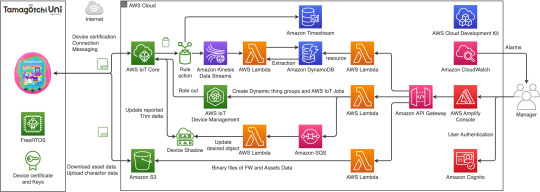
AWS IoT Core is used to manage the state of each Tamagotchi Uni device, which helps retrieve distributed items and content. AWS IoT Device Management is used to index the extensive Tamagotchi Uni fleet and create dynamic groups on the state of each device, facilitating efficient over-the-air (OTA) updates. FreeRTOS is used to minimize the amount of resources and code required to implement device-to-cloud communication for efficient system development. AWS Lambda is used to process tasks, delivering new announcements, and registering assets. Amazon DynamoDB is used as a fully managed, sever less, key-value noSQL database that runs high-performance applications at any scale. Amazon Simple Storage Service (Amazon S3) is used for object storage service, each of these data stores are used to manage the various resources within Tamagotchi Uni. Lastly, Amazon Timestream is used to accumulate historical data of user’s actions like downloading items and additional content.
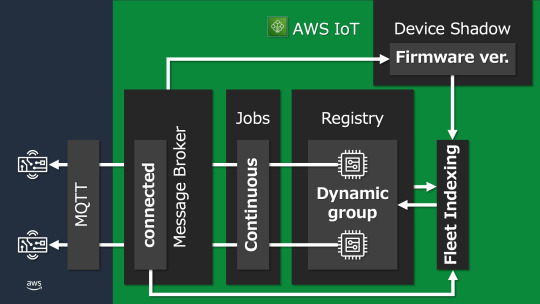
The article also details how Bandai is handling large scale firmware updates to Tamagotchi Uni devices which are executed at a rate of 1,000 units per hour which would have resulted in a delay for some devices. The team actually designed job delivery as a continuous job which automatically updates the devices under certain conditions. This is using fleet indexing that runs a query to see which devices meet the criteria for the update to be pushed out to it.
Lastly the article details how Bandai conducted system performance testing at a large-scale to emulate what it would be like after the device was released. They verified the smooth operation and performance of updates through their testing.
Be sure to check out the full article here on the Amazon AWS blog.
#tamapalace#tamagotchi#tmgc#tamagotchiuni#tamagotchi uni#uni#tamatag#virtualpet#bandai#amazonaws#amazon aws#aws#amazonwebservices#amazon web services#blog
14 notes
·
View notes
Text
Exploring the Power of Amazon Web Services: Top AWS Services You Need to Know
In the ever-evolving realm of cloud computing, Amazon Web Services (AWS) has established itself as an undeniable force to be reckoned with. AWS's vast and diverse array of services has positioned it as a dominant player, catering to the evolving needs of businesses, startups, and individuals worldwide. Its popularity transcends boundaries, making it the preferred choice for a myriad of use cases, from startups launching their first web applications to established enterprises managing complex networks of services. This blog embarks on an exploratory journey into the boundless world of AWS, delving deep into some of its most sought-after and pivotal services.

As the digital landscape continues to expand, understanding these AWS services and their significance is pivotal, whether you're a seasoned cloud expert or someone taking the first steps in your cloud computing journey. Join us as we delve into the intricate web of AWS's top services and discover how they can shape the future of your cloud computing endeavors. From cloud novices to seasoned professionals, the AWS ecosystem holds the keys to innovation and transformation.
Amazon EC2 (Elastic Compute Cloud): The Foundation of Scalability At the core of AWS's capabilities is Amazon EC2, the Elastic Compute Cloud. EC2 provides resizable compute capacity in the cloud, allowing you to run virtual servers, commonly referred to as instances. These instances serve as the foundation for a multitude of AWS solutions, offering the scalability and flexibility required to meet diverse application and workload demands. Whether you're a startup launching your first web application or an enterprise managing a complex network of services, EC2 ensures that you have the computational resources you need, precisely when you need them.
Amazon S3 (Simple Storage Service): Secure, Scalable, and Cost-Effective Data Storage When it comes to storing and retrieving data, Amazon S3, the Simple Storage Service, stands as an indispensable tool in the AWS arsenal. S3 offers a scalable and highly durable object storage service that is designed for data security and cost-effectiveness. This service is the choice of businesses and individuals for storing a wide range of data, including media files, backups, and data archives. Its flexibility and reliability make it a prime choice for safeguarding your digital assets and ensuring they are readily accessible.
Amazon RDS (Relational Database Service): Streamlined Database Management Database management can be a complex task, but AWS simplifies it with Amazon RDS, the Relational Database Service. RDS automates many common database management tasks, including patching, backups, and scaling. It supports multiple database engines, including popular options like MySQL, PostgreSQL, and SQL Server. This service allows you to focus on your application while AWS handles the underlying database infrastructure. Whether you're building a content management system, an e-commerce platform, or a mobile app, RDS streamlines your database operations.
AWS Lambda: The Era of Serverless Computing Serverless computing has transformed the way applications are built and deployed, and AWS Lambda is at the forefront of this revolution. Lambda is a serverless compute service that enables you to run code without the need for server provisioning or management. It's the perfect solution for building serverless applications, microservices, and automating tasks. The unique pricing model ensures that you pay only for the compute time your code actually uses. This service empowers developers to focus on coding, knowing that AWS will handle the operational complexities behind the scenes.
Amazon DynamoDB: Low Latency, High Scalability NoSQL Database Amazon DynamoDB is a managed NoSQL database service that stands out for its low latency and exceptional scalability. It's a popular choice for applications with variable workloads, such as gaming platforms, IoT solutions, and real-time data processing systems. DynamoDB automatically scales to meet the demands of your applications, ensuring consistent, single-digit millisecond latency at any scale. Whether you're managing user profiles, session data, or real-time analytics, DynamoDB is designed to meet your performance needs.
Amazon VPC (Virtual Private Cloud): Tailored Networking for Security and Control Security and control over your cloud resources are paramount, and Amazon VPC (Virtual Private Cloud) empowers you to create isolated networks within the AWS cloud. This isolation enhances security and control, allowing you to define your network topology, configure routing, and manage access. VPC is the go-to solution for businesses and individuals who require a network environment that mirrors the security and control of traditional on-premises data centers.
Amazon SNS (Simple Notification Service): Seamless Communication Across Channels Effective communication is a cornerstone of modern applications, and Amazon SNS (Simple Notification Service) is designed to facilitate seamless communication across various channels. This fully managed messaging service enables you to send notifications to a distributed set of recipients, whether through email, SMS, or mobile devices. SNS is an essential component of applications that require real-time updates and notifications to keep users informed and engaged.
Amazon SQS (Simple Queue Service): Decoupling for Scalable Applications Decoupling components of a cloud application is crucial for scalability, and Amazon SQS (Simple Queue Service) is a fully managed message queuing service designed for this purpose. It ensures reliable and scalable communication between different parts of your application, helping you create systems that can handle varying workloads efficiently. SQS is a valuable tool for building robust, distributed applications that can adapt to changes in demand.
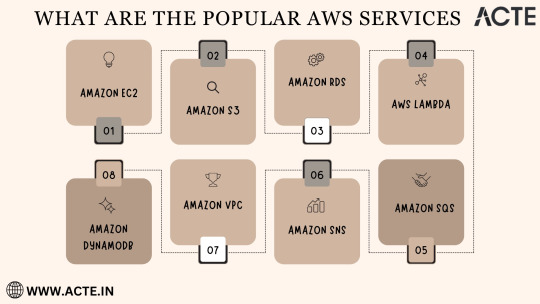
In the rapidly evolving landscape of cloud computing, Amazon Web Services (AWS) stands as a colossus, offering a diverse array of services that address the ever-evolving needs of businesses, startups, and individuals alike. AWS's popularity transcends industry boundaries, making it the go-to choice for a wide range of use cases, from startups launching their inaugural web applications to established enterprises managing intricate networks of services.
To unlock the full potential of these AWS services, gaining comprehensive knowledge and hands-on experience is key. ACTE Technologies, a renowned training provider, offers specialized AWS training programs designed to provide practical skills and in-depth understanding. These programs equip you with the tools needed to navigate and excel in the dynamic world of cloud computing.
With AWS services at your disposal, the possibilities are endless, and innovation knows no bounds. Join the ever-growing community of cloud professionals and enthusiasts, and empower yourself to shape the future of the digital landscape. ACTE Technologies is your trusted guide on this journey, providing the knowledge and support needed to thrive in the world of AWS and cloud computing.
8 notes
·
View notes
Text
Future Trends in Ruby on Rails Web Development

In the ever-evolving landscape of web development, Ruby on Rails (RoR) continues to be a popular and powerful framework for building robust, scalable, and efficient web applications. As technology advances and market demands evolve, the future of Ruby on Rails web development holds exciting possibilities and trends that promise to shape the way developers approach projects. In this article, we delve into the emerging trends and innovations in ruby on rails development company, highlighting the role of leading ruby on rails development companies, particularly those in the USA, in driving innovation and pushing the boundaries of what is possible in web development.
Embracing Modern JavaScript Frameworks:
As JavaScript frameworks like React, Vue.js, and AngularJS gain prominence in the web development landscape, Ruby on Rails developers are increasingly integrating these technologies into their projects. By leveraging the strengths of both Ruby on Rails and modern JavaScript frameworks, developers can create dynamic and interactive user interfaces that enhance the overall user experience. Ruby on Rails development companies in the USA are at the forefront of this trend, leveraging their expertise to seamlessly integrate JavaScript frameworks into RoR applications and deliver cutting-edge solutions to clients.
Microservices Architecture and Scalability:
With the growing complexity of web applications and the need for scalability and flexibility, the adoption of microservices architecture is becoming increasingly prevalent in Ruby on Rails web development. By breaking down monolithic applications into smaller, independent services, developers can achieve greater scalability, fault isolation, and agility. Leading ruby on rails web development companies in the USA are embracing microservices architecture to build scalable and resilient applications that can easily adapt to changing business requirements and user demands.
Progressive Web Applications (PWAs):
Progressive Web Applications (PWAs) represent a significant trend in web development, offering the benefits of both web and mobile applications. By leveraging modern web technologies, including service workers, web app manifests, and responsive design principles, developers can create PWAs that deliver a fast, reliable, and engaging user experience across devices and platforms. Ruby on Rails development companies in the USA are leveraging the flexibility and power of RoR to build PWAs that combine the best features of native mobile apps with the reach and accessibility of the web.
AI-Powered Applications and Chatbots:
Artificial intelligence (AI) and machine learning (ML) technologies are increasingly being integrated into web applications to enhance functionality and user experience. In Ruby on Rails web development, AI-powered applications and chatbots are becoming more prevalent, providing personalized recommendations, automated customer support, and intelligent decision-making capabilities. ruby on rails development company usa are leveraging AI and ML technologies to build sophisticated and intelligent web applications that anticipate user needs and deliver tailored experiences.
Serverless Architecture and Function as a Service (FaaS):
Serverless architecture is revolutionizing the way web applications are built and deployed, offering greater scalability, cost-efficiency, and flexibility. With the rise of Function as a Service (FaaS) platforms like AWS Lambda and Google Cloud Functions, developers can focus on writing code without worrying about managing servers or infrastructure. Leading ruby on rails development companies in the USA are embracing serverless architecture to build lightweight, event-driven applications that can scale seamlessly in response to fluctuating workloads and user demand.
Augmented Reality (AR) and Virtual Reality (VR) Experiences:
The integration of augmented reality (AR) and virtual reality (VR) technologies into web applications is opening up new possibilities for immersive and interactive user experiences. In Ruby on Rails web development, developers are exploring ways to incorporate AR and VR features into e-commerce platforms, educational portals, and entertainment websites. Ruby on Rails web development companies in the USA are at the forefront of this trend, leveraging RoR's flexibility and versatility to build immersive AR and VR experiences that push the boundaries of traditional web development.
Conclusion:
As technology continues to evolve and market demands shift, the future of Ruby on Rails web development holds immense potential for innovation and growth. By embracing emerging trends such as modern JavaScript frameworks, microservices architecture, progressive web applications, AI-powered applications, serverless architecture, and AR/VR experiences, ruby on rails web development company usa are poised to lead the way in shaping the next generation of web applications. With their expertise, creativity, and commitment to excellence, these companies are driving innovation and pushing the boundaries of what is possible in Ruby on Rails web development.
#ruby on rails development company#ruby on rails development company usa#ruby on rails web development company usa
2 notes
·
View notes
Text
Elevating Your Full-Stack Developer Expertise: Exploring Emerging Skills and Technologies
Introduction: In the dynamic landscape of web development, staying at the forefront requires continuous learning and adaptation. Full-stack developers play a pivotal role in crafting modern web applications, balancing frontend finesse with backend robustness. This guide delves into the evolving skills and technologies that can propel full-stack developers to new heights of expertise and innovation.

Pioneering Progress: Key Skills for Full-Stack Developers
1. Innovating with Microservices Architecture:
Microservices have redefined application development, offering scalability and flexibility in the face of complexity. Mastery of frameworks like Kubernetes and Docker empowers developers to architect, deploy, and manage microservices efficiently. By breaking down monolithic applications into modular components, developers can iterate rapidly and respond to changing requirements with agility.
2. Embracing Serverless Computing:
The advent of serverless architecture has revolutionized infrastructure management, freeing developers from the burdens of server maintenance. Platforms such as AWS Lambda and Azure Functions enable developers to focus solely on code development, driving efficiency and cost-effectiveness. Embrace serverless computing to build scalable, event-driven applications that adapt seamlessly to fluctuating workloads.
3. Crafting Progressive Web Experiences (PWEs):
Progressive Web Apps (PWAs) herald a new era of web development, delivering native app-like experiences within the browser. Harness the power of technologies like Service Workers and Web App Manifests to create PWAs that are fast, reliable, and engaging. With features like offline functionality and push notifications, PWAs blur the lines between web and mobile, captivating users and enhancing engagement.
4. Harnessing GraphQL for Flexible Data Management:
GraphQL has emerged as a versatile alternative to RESTful APIs, offering a unified interface for data fetching and manipulation. Dive into GraphQL's intuitive query language and schema-driven approach to simplify data interactions and optimize performance. With GraphQL, developers can fetch precisely the data they need, minimizing overhead and maximizing efficiency.
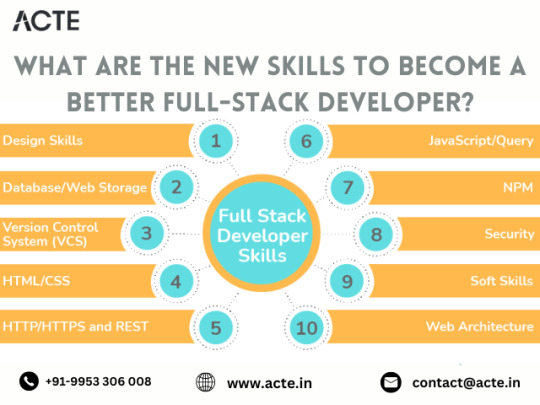
5. Unlocking Potential with Jamstack Development:
Jamstack architecture empowers developers to build fast, secure, and scalable web applications using modern tools and practices. Explore frameworks like Gatsby and Next.js to leverage pre-rendering, serverless functions, and CDN caching. By decoupling frontend presentation from backend logic, Jamstack enables developers to deliver blazing-fast experiences that delight users and drive engagement.
6. Integrating Headless CMS for Content Flexibility:
Headless CMS platforms offer developers unprecedented control over content management, enabling seamless integration with frontend frameworks. Explore platforms like Contentful and Strapi to decouple content creation from presentation, facilitating dynamic and personalized experiences across channels. With headless CMS, developers can iterate quickly and deliver content-driven applications with ease.
7. Optimizing Single Page Applications (SPAs) for Performance:
Single Page Applications (SPAs) provide immersive user experiences but require careful optimization to ensure performance and responsiveness. Implement techniques like lazy loading and server-side rendering to minimize load times and enhance interactivity. By optimizing resource delivery and prioritizing critical content, developers can create SPAs that deliver a seamless and engaging user experience.
8. Infusing Intelligence with Machine Learning and AI:
Machine learning and artificial intelligence open new frontiers for full-stack developers, enabling intelligent features and personalized experiences. Dive into frameworks like TensorFlow.js and PyTorch.js to build recommendation systems, predictive analytics, and natural language processing capabilities. By harnessing the power of machine learning, developers can create smarter, more adaptive applications that anticipate user needs and preferences.
9. Safeguarding Applications with Cybersecurity Best Practices:
As cyber threats continue to evolve, cybersecurity remains a critical concern for developers and organizations alike. Stay informed about common vulnerabilities and adhere to best practices for securing applications and user data. By implementing robust security measures and proactive monitoring, developers can protect against potential threats and safeguard the integrity of their applications.
10. Streamlining Development with CI/CD Pipelines:
Continuous Integration and Deployment (CI/CD) pipelines are essential for accelerating development workflows and ensuring code quality and reliability. Explore tools like Jenkins, CircleCI, and GitLab CI/CD to automate testing, integration, and deployment processes. By embracing CI/CD best practices, developers can deliver updates and features with confidence, driving innovation and agility in their development cycles.
#full stack developer#education#information#full stack web development#front end development#web development#frameworks#technology#backend#full stack developer course
2 notes
·
View notes
Text
Navigating AWS: A Comprehensive Guide for Beginners
In the ever-evolving landscape of cloud computing, Amazon Web Services (AWS) has emerged as a powerhouse, providing a wide array of services to businesses and individuals globally. Whether you're a seasoned IT professional or just starting your journey into the cloud, understanding the key aspects of AWS is crucial. With AWS Training in Hyderabad, professionals can gain the skills and knowledge needed to harness the capabilities of AWS for diverse applications and industries. This blog will serve as your comprehensive guide, covering the essential concepts and knowledge needed to navigate AWS effectively.

1. The Foundation: Cloud Computing Basics
Before delving into AWS specifics, it's essential to grasp the fundamentals of cloud computing. Cloud computing is a paradigm that offers on-demand access to a variety of computing resources, including servers, storage, databases, networking, analytics, and more. AWS, as a leading cloud service provider, allows users to leverage these resources seamlessly.
2. Setting Up Your AWS Account
The first step on your AWS journey is to create an AWS account. Navigate to the AWS website, provide the necessary information, and set up your payment method. This account will serve as your gateway to the vast array of AWS services.
3. Navigating the AWS Management Console
Once your account is set up, familiarize yourself with the AWS Management Console. This web-based interface is where you'll configure, manage, and monitor your AWS resources. It's the control center for your cloud environment.
4. AWS Global Infrastructure: Regions and Availability Zones
AWS operates globally, and its infrastructure is distributed across regions and availability zones. Understand the concept of regions (geographic locations) and availability zones (isolated data centers within a region). This distribution ensures redundancy and high availability.
5. Identity and Access Management (IAM)
Security is paramount in the cloud. AWS Identity and Access Management (IAM) enable you to manage user access securely. Learn how to control who can access your AWS resources and what actions they can perform.
6. Key AWS Services Overview
Explore fundamental AWS services:
Amazon EC2 (Elastic Compute Cloud): Virtual servers in the cloud.
Amazon S3 (Simple Storage Service): Scalable object storage.
Amazon RDS (Relational Database Service): Managed relational databases.
7. Compute Services in AWS
Understand the various compute services:
EC2 Instances: Virtual servers for computing capacity.
AWS Lambda: Serverless computing for executing code without managing servers.
Elastic Beanstalk: Platform as a Service (PaaS) for deploying and managing applications.
8. Storage Options in AWS
Explore storage services:
Amazon S3: Object storage for scalable and durable data.
EBS (Elastic Block Store): Block storage for EC2 instances.
Amazon Glacier: Low-cost storage for data archiving.
To master the intricacies of AWS and unlock its full potential, individuals can benefit from enrolling in the Top AWS Training Institute.

9. Database Services in AWS
Learn about managed database services:
Amazon RDS: Managed relational databases.
DynamoDB: NoSQL database for fast and predictable performance.
Amazon Redshift: Data warehousing for analytics.
10. Networking Concepts in AWS
Grasp networking concepts:
Virtual Private Cloud (VPC): Isolated cloud networks.
Route 53: Domain registration and DNS web service.
CloudFront: Content delivery network for faster and secure content delivery.
11. Security Best Practices in AWS
Implement security best practices:
Encryption: Ensure data security in transit and at rest.
IAM Policies: Control access to AWS resources.
Security Groups and Network ACLs: Manage traffic to and from instances.
12. Monitoring and Logging with AWS CloudWatch and CloudTrail
Set up monitoring and logging:
CloudWatch: Monitor AWS resources and applications.
CloudTrail: Log AWS API calls for audit and compliance.
13. Cost Management and Optimization
Understand AWS pricing models and manage costs effectively:
AWS Cost Explorer: Analyze and control spending.
14. Documentation and Continuous Learning
Refer to the extensive AWS documentation, tutorials, and online courses. Stay updated on new features and best practices through forums and communities.
15. Hands-On Practice
The best way to solidify your understanding is through hands-on practice. Create test environments, deploy sample applications, and experiment with different AWS services.
In conclusion, AWS is a dynamic and powerful ecosystem that continues to shape the future of cloud computing. By mastering the foundational concepts and key services outlined in this guide, you'll be well-equipped to navigate AWS confidently and leverage its capabilities for your projects and initiatives. As you embark on your AWS journey, remember that continuous learning and practical application are key to becoming proficient in this ever-evolving cloud environment.
2 notes
·
View notes
Text
#Amazon S3
#automation
#AWS CloudFormation
#AWS CloudWatch
#AWS Config
#AWS environment
#AWS
#IAM
#AWS KMS
#AWS Lambda
#AWS Partners
#AWS Security Services
#AWS Shield
#AWS Systems Manager
#AWS WAF
#Cloud Computing
#Cloud security
#collaboration
#continuous monitoring
#cyber threats
#Cybersecurity
#data security
#encryption
#Endpoint Security
#IAM policies
#Identity and Access Management
#Incident response
#Infrastructure as code
#Least privilege
#Micro-Segmentation
#Multi-factor authentication
2 notes
·
View notes
Link
11 notes
·
View notes
Text
Advanced Techniques in Full-Stack Development

Certainly, let's delve deeper into more advanced techniques and concepts in full-stack development:
1. Server-Side Rendering (SSR) and Static Site Generation (SSG):
SSR: Rendering web pages on the server side to improve performance and SEO by delivering fully rendered pages to the client.
SSG: Generating static HTML files at build time, enhancing speed, and reducing the server load.
2. WebAssembly:
WebAssembly (Wasm): A binary instruction format for a stack-based virtual machine. It allows high-performance execution of code on web browsers, enabling languages like C, C++, and Rust to run in web applications.
3. Progressive Web Apps (PWAs) Enhancements:
Background Sync: Allowing PWAs to sync data in the background even when the app is closed.
Web Push Notifications: Implementing push notifications to engage users even when they are not actively using the application.
4. State Management:
Redux and MobX: Advanced state management libraries in React applications for managing complex application states efficiently.
Reactive Programming: Utilizing RxJS or other reactive programming libraries to handle asynchronous data streams and events in real-time applications.
5. WebSockets and WebRTC:
WebSockets: Enabling real-time, bidirectional communication between clients and servers for applications requiring constant data updates.
WebRTC: Facilitating real-time communication, such as video chat, directly between web browsers without the need for plugins or additional software.
6. Caching Strategies:
Content Delivery Networks (CDN): Leveraging CDNs to cache and distribute content globally, improving website loading speeds for users worldwide.
Service Workers: Using service workers to cache assets and data, providing offline access and improving performance for returning visitors.
7. GraphQL Subscriptions:
GraphQL Subscriptions: Enabling real-time updates in GraphQL APIs by allowing clients to subscribe to specific events and receive push notifications when data changes.
8. Authentication and Authorization:
OAuth 2.0 and OpenID Connect: Implementing secure authentication and authorization protocols for user login and access control.
JSON Web Tokens (JWT): Utilizing JWTs to securely transmit information between parties, ensuring data integrity and authenticity.
9. Content Management Systems (CMS) Integration:
Headless CMS: Integrating headless CMS like Contentful or Strapi, allowing content creators to manage content independently from the application's front end.
10. Automated Performance Optimization:
Lighthouse and Web Vitals: Utilizing tools like Lighthouse and Google's Web Vitals to measure and optimize web performance, focusing on key user-centric metrics like loading speed and interactivity.
11. Machine Learning and AI Integration:
TensorFlow.js and ONNX.js: Integrating machine learning models directly into web applications for tasks like image recognition, language processing, and recommendation systems.
12. Cross-Platform Development with Electron:
Electron: Building cross-platform desktop applications using web technologies (HTML, CSS, JavaScript), allowing developers to create desktop apps for Windows, macOS, and Linux.
13. Advanced Database Techniques:
Database Sharding: Implementing database sharding techniques to distribute large databases across multiple servers, improving scalability and performance.
Full-Text Search and Indexing: Implementing full-text search capabilities and optimized indexing for efficient searching and data retrieval.
14. Chaos Engineering:
Chaos Engineering: Introducing controlled experiments to identify weaknesses and potential failures in the system, ensuring the application's resilience and reliability.
15. Serverless Architectures with AWS Lambda or Azure Functions:
Serverless Architectures: Building applications as a collection of small, single-purpose functions that run in a serverless environment, providing automatic scaling and cost efficiency.
16. Data Pipelines and ETL (Extract, Transform, Load) Processes:
Data Pipelines: Creating automated data pipelines for processing and transforming large volumes of data, integrating various data sources and ensuring data consistency.
17. Responsive Design and Accessibility:
Responsive Design: Implementing advanced responsive design techniques for seamless user experiences across a variety of devices and screen sizes.
Accessibility: Ensuring web applications are accessible to all users, including those with disabilities, by following WCAG guidelines and ARIA practices.
full stack development training in Pune
2 notes
·
View notes
Text

“Alright.”, Lambda One sighs out. “How are we doin’ this?”

“Do what?”

“We’re gonna have to have a way for people to tell us apart. We’re gonna have to like, I dunno… color code or some shit.”

“Oh yeah.” There’s a pause as Lambda Two thinks. “Aw, fuck. I dunno? Do I just wear blue or somethin’?”

“I mean, I guess? It ain’t like we’ve got any other ideas.” This was going to be a long four days.
#//okay so! i have an idea for this#//og lambda uses cauli.fla/the other db.z icons I’ve got while lambda two uses the akira icons I have lol#//this is going to be so hectic omg#he's a killer queen... {ic}#m!a: seeing double
2 notes
·
View notes
Text
The Future of Full Stack Development: Trends to Watch
Full-stack development is one of the fastest-growing domains in today's ever-changing technological landscape. This vast field encompasses both front-end and back-end development and continually evolves to keep up with new trends, technologies, and methodologies. As we move further into the digital era, predicting the future of full-stack development and the trends that will shape it becomes increasingly crucial.
We will discuss important developments in the ever-changing field of full-stack development that businesses, developers, and engineers should stay updated on.
1. Rise of Serverless Architecture:
The development and deployment of apps is being completely transformed by serverless architecture. Developers used to be responsible for maintaining, scaling, and managing server infrastructure. But with serverless computing, developers don't have to worry about managing servers—they can concentrate entirely on building code.
Because serverless architecture has advantages like cost-effectiveness, scalability, and quicker application time-to-market, we may anticipate seeing even more of it in the future. This industry will continue to be dominated by technologies like AWS Lambda, Azure Functions, and Google Cloud Functions, which enable developers to create scalable and effective applications.
2. Adoption of Microservices:
Microservices architecture has emerged as a revolutionary concept in software development, and it has garnered a great deal of attention from developers who are eager to explore its potential benefits and embrace it in their projects.This innovative approach divides large, complex applications into smaller, loosely linked services, offering a range of benefits such as improved agility, scalability, and resilience. This makes it an ideal solution for modern cloud-native applications that require flexibility and adaptability. As businesses continue to demand systems that are easily manageable, scalable, and modular, microservices are fast becoming the go-to solution. With microservices, developers can create applications that are more flexible and adaptable to changes in the market. And with the help of powerful tools like Docker for containerization and Kubernetes for orchestration, building complex systems has never
been easier. In conclusion, microservices architecture is a game-changer that is transforming the way software is built and deployed. It offers a range of benefits that make it an ideal solution for modern cloud-native applications. By adopting microservices architecture, developers can create applications that are more flexible, scalable, and resilient, helping businesses stay ahead of the curve in today's fast-paced digital landscape.
3. Continued Dominance of JavaScript:
JavaScript is the backbone of web development, powering both front-end and back-end processes. With the emergence of Node.js, the language has become even more indispensable, allowing developers to use it for full-stack development. As we look to the future, JavaScript's adaptability, vast ecosystem, and strong community support will ensure that it remains a mainstay of full-stack development. Additionally, Node.js will continue to gain popularity for back-end development due to its asynchronous and event-driven architecture. Meanwhile, popular front-end frameworks like React, Angular, and Vue.js will remain competitive alternatives for front-end development. In short, JavaScript is the language of the web, and it will continue to be so. Its versatility and community support are unparalleled, and its usage will only increase in the years to come, making it an essential language for any developer aiming to build top-quality web applications.
4. Emergence of Progressive Web Apps (PWAs):
Progressive Web Apps (PWAs) are the future of web application development. They provide a native app-like experience within the web browser using cutting-edge web technologies that ensure dependable and fast experiences on all devices, regardless of network conditions. PWAs are the perfect solution for bridging the gap between web and mobile applications, offering a strong substitute for conventional native apps as mobile usage continues to soar. By combining the reach of the web with the functionality of native apps, PWAs offer an easy-to-use and effective option for enhancing your web applications. Don't miss out on the opportunity to take your web applications to the next level with PWAs. Start using PWAs today and experience the benefits they have to offer!
5. Integration of Artificial Intelligence and Machine Learning:
All industries are undergoing a transformation due to Artificial Intelligence (AI) and Machine Learning (ML), and full-stack development is no exception. Developers are
integrating AI and ML capabilities into their applications to offer personalized experiences, automate procedures, and extract data-driven insights. In the future, we can expect to see a widespread use of AI and ML in full-stack development, powering functions such as natural language processing, recommendation engines, and predictive analytics. TensorFlow, PyTorch, and scikit-learn are just a few of the frameworks and tools that will help make these technologies more accessible and democratize AI and ML for developers.
Conclusion:
As we stand at the precipice of tomorrow's technological frontier, it's evident that the future of full-stack development holds immense promise and potential. From the rise of serverless architecture to the integration of artificial intelligence, the landscape is ripe with opportunities for innovation and growth.As we gaze into the horizon of full stack development, it's evident that embracing emerging trends is essential for staying ahead.
At Zoople Technologies, we're not just witnessing the future – we're shaping it. Our commitment to excellence and innovation makes us the destination for aspiring full stack developers. With expert-led courses and a supportive learning environment, Zoople Technologies empowers individuals to thrive in the ever-evolving tech landscape. Join us on this exhilarating journey towards mastery. Discover your potential and unlock endless possibilities. Embrace the future with confidence. Choose Zoople Technologies – where the best become even better.
To read more content like this visit https://zoople.in/blog
Visit our website https://zoople.in
#python#programming#seo#machine learning#google#digital marketing#kochi#artificial intelligence#software engineering#kerala
1 note
·
View note
Text
How Can AWS DevOps Services and Consulting Revolutionize Your Cloud Strategy
In the dynamic realm of cloud computing, staying ahead of the curve is imperative for businesses striving to succeed in the digital age. As organizations move to the cloud, efficient management, rapid deployment, and seamless integration are essential. This is where AWS DevOps services and consulting step onto the stage, offering a transformative approach that propels cloud strategies to new heights of agility, scalability, and innovation.
Discover AWS DevOps Services and Consulting
To stay ahead in the rapidly evolving technological landscape. This is where the synergy between cloud computing and DevOps practices comes into play. DevOps, a methodology that fosters collaboration between development and operations teams to automate and streamline software delivery, aligns perfectly with the capabilities of Amazon Web Services (AWS).
Flentas, an established AWS consulting partner and a provider of AWS DevOps services, stands out as a pioneering guide in this transformative journey. Through their expertise, businesses can harness the full potential of AWS DevOps tools and practices to achieve operational excellence. By integrating development, testing, and deployment, Flentas paves the way for accelerated software delivery cycles, reduced downtime, and enhanced customer experiences.
The AWS DevOps Advantage
One of the core tenets of AWS DevOps services lies in automation. Automation minimizes the risk of human error, increases efficiency, and allows teams to focus on strategic tasks rather than mundane, repetitive processes. By orchestrating this intricate symphony of automation within AWS, businesses can leverage services like AWS Code Pipeline, AWS Code Build, and AWS Lambda to build robust pipelines that streamline the delivery process.
Scalability is another hallmark of both AWS and DevOps. AWS's elastic infrastructure allows businesses to scale resources up or down based on demand, optimizing costs without compromising performance. DevOps practices seamlessly integrate with this scalability, enabling companies to develop applications and services that can grow and shrink in response to user activity. This ensures consistent performance and cost efficiency.
Continuous Integration and Continuous Deployment (CI/CD)
The marriage of AWS's capabilities with DevOps practices ushers in the Continuous Integration and Continuous Deployment (CI/CD) era. CI/CD automates the building, testing, and deployment of applications, ensuring that changes are swiftly integrated into the production environment while maintaining high quality. Establishing robust CI/CD pipelines using AWS services like AWS Code Pipeline and AWS CodeDeploy reduces time-to-market, increases innovation velocity, and enhances competitiveness.
Enhancing Collaboration and Innovation
The collaboration fostered by DevOps practices aligns seamlessly with AWS's emphasis on teamwork and innovation. Cloud-native tools facilitate communication and cooperation among developers, operations, and other stakeholders, allowing businesses to respond rapidly to market shifts and customer demands. With the transformative guidance of an AWS consulting partner like Flentas, organizations can confidently navigate this landscape and harness the true potential of AWS DevOps services.
Conclusion
As companies navigate the challenges of the digital era, the importance of AWS DevOps services and consulting continues to grow. The seamless integration of DevOps methodologies with AWS's robust cloud infrastructure empowers organizations to streamline their operations, accelerate innovation, and remain agile in the face of ever-changing market dynamics. Flentas, as an AWS consulting partner, stands ready to guide businesses through this transformative journey, unlocking the full potential of AWS DevOps services and revolutionizing their cloud strategies for sustained success.
For more details about our services, please visit our website – Flentas Technologies
0 notes
Text
web development,
web development,
Web development is the backbone of the internet, shaping the digital landscape we interact with daily. From simple static websites to complex web applications, the realm of web development encompasses various technologies, methodologies, and frameworks. In this guide, we delve into the essentials of web development, exploring its core components, trends, and best practices.
Understanding Web Development:
At its core, web development involves creating, building, and maintaining websites and web applications. It encompasses three primary layers:
Frontend Development: This layer deals with the visual and interactive aspects of a website or web application that users interact with directly. HTML, CSS, and JavaScript are the fundamental technologies used in frontend development. HTML (Hypertext Markup Language) structures the content of web pages, CSS (Cascading Style Sheets) styles the layout and design, while JavaScript adds interactivity and dynamic behavior.
Backend Development: The backend layer comprises the server-side of web development, handling data storage, processing, and business logic. Backend developers work with programming languages like Python, Ruby, PHP, Java, and frameworks such as Node.js, Django, Ruby on Rails, and Laravel to build server-side applications.
Database Management: Databases store and manage the structured data of web applications. Common database systems include MySQL, PostgreSQL, MongoDB, and SQLite. Backend developers use these systems to store and retrieve data efficiently.
Key Technologies and Tools:
HTML5 and CSS3: HTML5 introduces new semantic elements and APIs, while CSS3 offers advanced styling capabilities like animations, transitions, and responsive design.
JavaScript and Frontend Frameworks: JavaScript frameworks/libraries such as React, Angular, and Vue.js simplify frontend development by providing reusable components and efficient state management.
Backend Frameworks: Frameworks like Node.js, Django, and Ruby on Rails accelerate backend development by offering pre-built modules, routing mechanisms, and ORM (Object-Relational Mapping) for database interaction.
Version Control Systems: Git, with platforms like GitHub and GitLab, facilitates collaboration among developers by managing codebase versions and enabling seamless integration and deployment.
DevOps and Deployment: Tools like Docker, Kubernetes, and continuous integration/continuous deployment (CI/CD) pipelines streamline the deployment process, ensuring the scalability, reliability, and security of web applications.
Trends and Best Practices:
Responsive Web Design: With the increasing prevalence of mobile devices, responsive design ensures that websites adapt seamlessly to different screen sizes, providing an optimal user experience across devices.
Progressive Web Apps (PWAs): PWAs leverage modern web technologies to deliver app-like experiences, offering offline functionality, push notifications, and fast performance.
Serverless Architecture: Serverless computing abstracts server management, enabling developers to focus on writing code without worrying about infrastructure management. Platforms like AWS Lambda and Google Cloud Functions facilitate serverless development.
Microservices: Microservices architecture decomposes applications into smaller, independently deployable services, promoting scalability, maintainability, and agility.
Accessibility and Inclusivity: Ensuring web applications are accessible to all users, including those with disabilities, through features like semantic HTML, keyboard navigation, and screen reader compatibility.
Conclusion:
Web development continues to evolve rapidly, driven by technological advancements and changing user expectations. Whether you're a beginner embarking on your web development journey or a seasoned developer adapting to new trends, staying informed about the latest technologies, tools, and best practices is essential. By embracing innovation and adhering to best practices, developers can create engaging, accessible, and scalable web experiences that shape the future of the internet.
0 notes